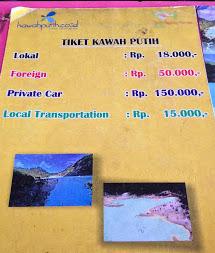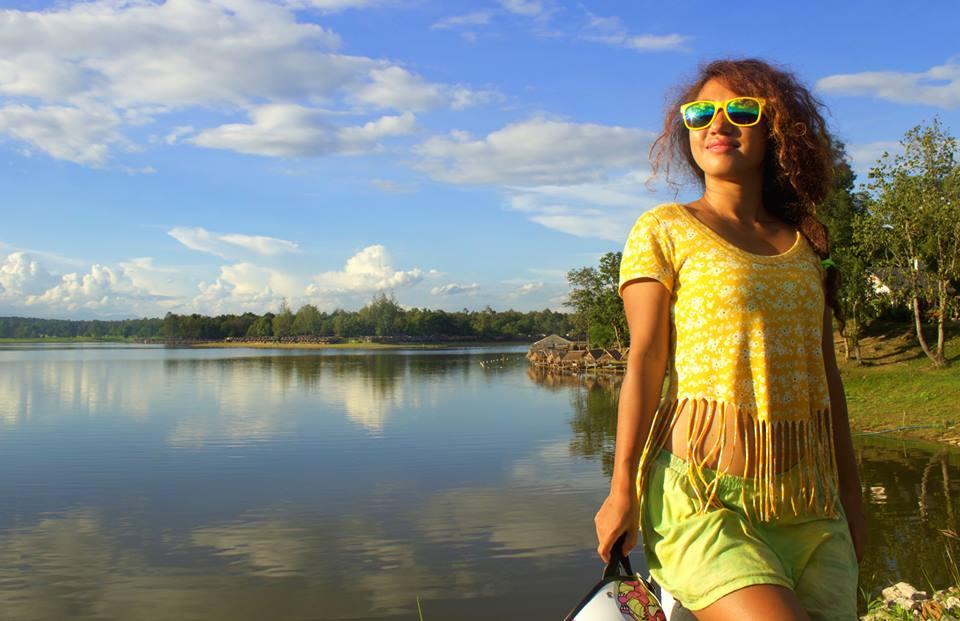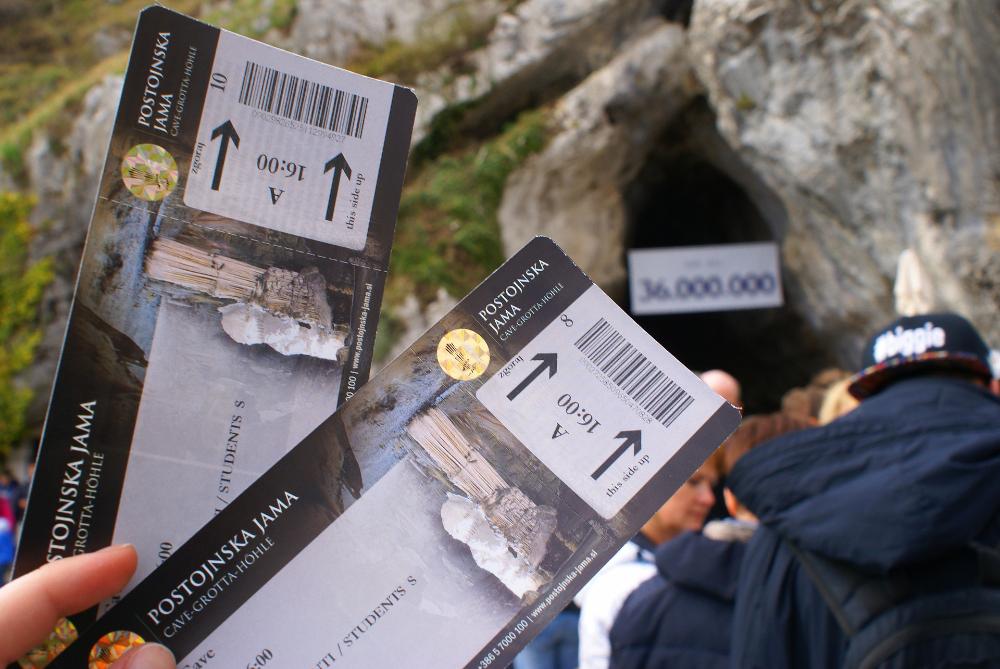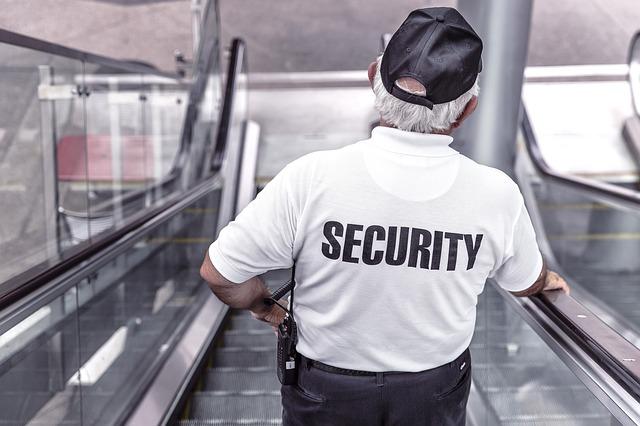8 Crafty Ways To Avoid Paying Unfair Entrance Fees In Southeast Asia

Imagine this common travel scenario.
After a long journey from your guesthouse, you finally reach a remote cave, temple, waterfall, crater lake, ancient ruin, national park, vantage point or some other unique or interesting attraction.
You’re feeling excited with anticipation as you make your way towards the entrance, but your heart sinks as you suddenly realize that there’s a ticket booth, or perhaps a person stationed there, issuing tickets to visitors.
''Not another ticket checkpoint'' you think to yourself, knowing you will now be forced to hand over cash if you want to make it through the entrance. To make things worse, you notice that the locals seem to be entering for free or for a pittance, while you're being asked to pay several dollars.

Anyone that has travelled around Southeast Asia will know that scenarios like this one are all too common.
The trouble, in this part of the world, is that so many things that could be considered attractions or points of interest come with a price tag.
In a kind of circular logic, the entrance fee is justified by the fact that it pays the wages of the staff that man the ticket counters and inspect visitors for valid tickets. There aren't any other running costs for some of these attractions.
For the major or famous attractions that act like tourist magnets and draw hundreds of new visitors each day, entrance fees will usually be high enough to cause a fairly serious injury to your wallet.
Attractions like Angkor Wat in Cambodia, Sigiriya (Lion's rock) in Sri Lanka, Borobudur in Indonesia or The Grand Palace in Bangkok all come with price tags ranging from $15-30 for foreign tourists and that's just for a one-time entry.
Locals on the other hand can often enter these places for free or for a dollar or two.
This is what's known as a dual-pricing scheme.
Most countries also have a number of minor attractions that lie off the well-beaten tourist trail.
The entrance fees for these are usually a lot more reasonable and affordable for budget travellers. Unfortunately however, they do still add up to a significant total expense if you’re visiting several of these smaller attractions in a single day. Five waterfalls at $2 each still adds up to $10.
The point is that if you’re visiting a lot of interesting places on a daily basis, your daily expenses as a traveller are going to be increased considerably by all of these entrance fees, and the problem is greatly magnified by the considerably higher amounts that foreigners are often forced to pay.
We've personally had to deal with this problem for the entire duration of the time we've spent in Southeast Asia and have come up with some solutions that work at least part of the time, imperfect as they may be.
Now, we understand that some people are not on tight budgets, have plenty of spare money to spend on entrance fees and don’t disagree on principle with foreigners having to pay greatly exaggerated entrance fees. If you are one of those people, then this article will be of little interest to you.
The following tips will be aimed at people on a very low budget who would like to still be able to experience all of the attractions in Southeast Asia that lie behind a paywall.
Those who are not on a tight budget but simply disagree on principle with inflated foreigner admission fees and find them irksome, will also surely be interested in knowing a few ways to avoid paying.
The strategies

All of the strategies that we've experimented with have either enabled us to obtain the much cheaper 'local' tickets or have allowed us to completely avoid having to purchase a ticket for the attraction.
We have in fact saved hundreds of dollars by using these simple strategies over the past few years of travelling and they’ve enabled us to still be able to experience all the natural and cultural wonders of Southeast Asia on an extremely tight budget.
Without further ado, here are 9 crafty ways to avoid paying unfair entrance fees in Southeast Asia.
#1 - Establish rapport with the ticket seller

Establishing good rapport and friendly banter with the ticket issuer is one of the most powerful tools in your arsenal for getting a free admission and it should be the foundation of any other attempted strategy to gain entry for free or at a reduced rate.
Before any other strategies are used to try to persuade the ticket seller to let you in without paying, you must entirely forget your ‘goal’ of gaining a free entry and just try to first establish a good personal connection with the ticket seller.
People often magically bend the rules once they start to like you and they often somehow begin to sympathize with your reasons or excuses for not wanting to or not being able to purchase a ticket.
Use it for:
Minor attractions only. This won't help much at the famous attractions where thousands of tourists are visiting. At the big attractions, things get more impersonal and rules become inflexible because there is normally a lot more money at stake if somebody gets in for free.
#2 - Have a travel partner that resembles a local

It's not always easy to tell what exact country a Southeast Asian person is from, even for other people that live in the region. This is a great advantage for many Southeast Asians when it comes to entrance tickets as they can often be mistaken to have the same nationality as the residents of that country and thus obtain a discounted local ticket.
The strategy here is really quite simple but it will only work if you already have an Asian friend, partner or spouse to travel with.
The strategy goes something like this:
You have your Asian travel partner approach the ticket counter and purchase two 'local' tickets, one for him/her and one for you. This can often go quite smoothly without any questioning, as long as they can avoid a conversation with the ticker issuer, where it will become immediately apparent they don't speak the local language. If this happens though it is still often possible to convincingly argue the case for ethnically belonging to the country (mother or father is native to that country etc.)
Your role in all of this is just to remain out of view until your partner has successfully bought two local tickets. You can both then rejoin each other and head towards the entrance.
There will sometimes be a checkpoint at the main entrance beyond the ticket booth with somebody making sure that everybody passing through has the appropriate ticket. This person might question you for carrying a local ticket as a foreigner. If this happens just have your’wife/husband’ explain that he/she belongs ethnically to the country and that you’re her expat spouse with residency in the country.
If you do it right, this strategy should work for you at least some of the time as it has done for us. If it fails it'll be because the ticket issuer is not convinced but there's nothing to worry about because they can't prove you're lying.
Use it for:
Minor attractions only. Famous attractions are a lot stricter and will ask your travel partner for proof of residency if he/she doesn't fluently speak the local language. In fact, they may ask for proof of residency even if your partner can fluently speak the local language.
If you can’t get a suitable partner to help you, then take a look at strategy #3.
#3 - Ask a local to buy you a local ticket
It's worth a shot sometimes asking a domestic tourist or local to buy you a local ticket while you wait out of sight of the ticket counter. Some locals will be afraid to help you out but others will be happy to assist you.
If there is another person checking for tickets beyond the ticket booth, you might be questioned for having a 'local' ticket as a foreigner, but a plausible pre-prepared excuse and confident demeanour should win the inspector over in many instances.
#4 - Claim to be a resident of the country

In some countries or attractions you don't have to necessarily be a native of that country to get discounted ticket. Discounted tickets are sometimes offered to foreigners who can display proof of long-term residency in a country.
If you can convince the ticket issuer that you’re an expat who lives in the country, a foreign student studying there or that you’re married to and living in the country with a local person, you stand a greatly increased chance of getting issued a discounted local ticket.
Some countries also give discounted rates to citizens of certain countries (e.g Sri Lanka often offers discounted rates to citizens of SAARC countries) so you can also consider trying to prove that your country of residence is one of those lucky countries.
To make this strategy work, it is usually theoretically necessary to carry some proof of your claim of residency, like an identity card. Places like Khao San Road in Bangkok make a wide variety of fake IDs for tourists, from fake driving licenses to student cards, although the various providers there don't list residency cards on their advertising signboards, meaning it could be a long shot.
If you can’t get a fake residency ID made you can try to convince the ticket issuer that you unfortunately forgot your ID today but that you have been buying local tickets everywhere else up until this point.
To make this excuse more credible it helps to have a sizeable collection of any local tickets that you managed to successfully buy at previously visited attractions that same day or a few days prior.
If you can show the ticker issuer evidence that you have been buying local tickets for every attraction in the country up until this point, then they’ll be more likely to believe your claim that you really are a resident and that you just happened to forget to bring your ID on the day.
This particular strategy is not always effective but can work sometimes if you’re persistent in arguing against the ticket seller’s initial refusal and can speak very convincingly.
Use it for:
This strategy will work on many smaller attractions and even some museums, depending on how convincing you can be. Big attractions will still normally ask you for proof though, no matter how convincing you are.
#5 - Play the sympathy card

In Laos and in Sri Lanka, we used the ‘we're not carrying money’ strategy quite a bitto gain free entry into many of the minor attractions in rural areas.
We’d initially act surprised when the ticket seller called us over to purchase our tickets. We’d tell them how far we’d driven from the town just to see this one attraction and that we didn't bring much cash because we never expected there to be an entrance fee.
We’d then turn our pockets inside out and show the ticker seller that we regrettably had absolutely no money at all left to pay for the ticket, often telling them how we had been ‘cleaned out’ by all the other overpriced attractions we visited that same day.
If this excuse is not proving effective, you can begin to offer things such as fruit or maybe some cheap jewellery that you’re wearing in exchange for a ticket. We once got free admission to site no. 3 of the Plain Of Jars in Laos by offering the ticket-selling girl a cheap bracelet that we had bought in Vietnam.
You can also try to make a compromise by offering a smaller amount of money (your last dollar for example) or requesting to buy just one ticket for two people.
This will help to persuade the ticket seller that you really are tight on cash but you’re still making an effort to contribute something. If you’re dealing with a nice person and you managed to build good rapport at the beginning, you might just gain their sympathy with this strategy.
Use it for:
Only very remote or minor attractions. This one works best in rural attractions in more laid-back countries like Laos. The setting you try it in should be very informal where the ticket-selling people are not immune to bribery or bending the rules.
#6 - The 'I'll pay tomorrow instead' excuse

Sometimes a fairly lenient ticket seller will allow you a free entry if you can convince him/her that you’re currently not carrying any cash and that you’ll be back tomorrow to pay. Speak confidently and assertively and argue for long enough and this might work for you in certain places as it has done for us.
The most recent example we can remember of having success with this strategy was at the giant Bahiravokanda Vihara Buddha statue in Kandy, Sri Lanka. We told the monk selling tickets at the entrance that we'd pay tomorrow several times and just kept arguing with him until he finally let us through for free.
Use it for:
Only minor attractions or places where entrance fees aren't taken too seriously. For the bigger attractions this almost certainly won't work.
#7 - Enter with the expired tickets of other tourists

At some attractions, the duty of checking that everybody has bought a ticket is given to a ticket inspector, usually found at a bottleneck just beyond the counter where you pay for the actual ticket.
Now the thing is that this ticket inspector won’t always be punching, tearing, stamping or otherwise altering the tickets in order to invalidate them for a second use. Sometimes he or she will just give the ticket a quick glance and let the person through.
This will often be the case in the less strictly policed attractions, where security is taken less seriously and they’re not trying so hard to extract money from every single person.
It is often possible to take advantage of this loophole by waiting near the entrance for other travellers or tourists to exit and by requesting they hand you their used tickets after they do so.
However before you go ahead and ask people for their tickets, you should obviously confirm that the ticket inspector at the main entrance is actually just checking the tickets with a quick glance. If that's the case then you have the green light.
All you have to do now is approach people after they exit and kindly request that they hand you their tickets if they haven't yet thrown them away. Do this very discreetly of course and do it out of sight of the ticket counter and the ticket inspector at the main entrance.
The results here may vary but some people will surely say yes and be willing to help out a fellow traveller if you ask nicely. We tried it once at the Shwedagon pagoda in Yangon, Myanmar and the group of exiting tourists were happy to hand us their expired tickets.
Now just take the ticket, maybe hover around the ticket counter for a bit pretending to be queuing for a ticket and then try your luck with the ticket inspector. If you just behave normally the inspector shouldn't detect that anything is amiss.
Use it for:
This strategy will work with many of the minor or rural attractions but for more serious money-generating machines it may not be so effective. Most of the bigger attractions have either a system for invalidating tickets for a second entry or they have a photograph of your face on the ticket, making it more difficult to fool the ticket inspector.
#8 - Sneak in

For travellers on a tight budget, avoiding the admission fees of big or famous attractions is highly necessary (due to the higher entrance fees) yet often very difficult or risky (due to inflexible rules, heavypolicing and/or physical obstacles to entry).
Understandably, many people don't want to take the risk of getting caught and either succumb to paying the high admission fee or just forego the attraction entirely.
The previously discussed strategies that often work well for smaller attractions won’t usually work here. Discounted local tickets are usually impossible to obtain without a residency card and they don't bend the rules at these places. Your choice is to either buy the ticket at the stated price or go home.
The most effective strategy here is to generally to sneak in by the most expedient means available, thus avoiding the ticket counter entirely.
There are some caveats that go with this strategy, as even if you're successful in sneaking in, you may still face a number of issues.
In case you’re randomly asked by an official to prove you have a ticket while inside (not uncommon), it’s wise to have in your possession a used ticket that you obtained from an exiting person on the same day. If you can't present one and you lack a plausible excuse, the authorities may question you or detain you for hours and try to get you to confess that you snuck in.
Also be aware that having someone else's used ticket will not always be foolproof if they are printing a photo of each person on the tickets, such as is done at Angkor Wat in Cambodia. If your face doesn't match the one on the ticket...

Some of the major attractions in Southeast Asia can be sneaked into surprisingly easily. At the most popular temples in Ayutthaya in Thailand for example, there are low walls running around the perimeter of the temple sites, which you can simply clamber over quickly as long as no guards are on patrol in the immediate area inside the compound.
Amazingly, when we visited the Temple of the Sacred Tooth Relic in Kandy, Sri Lanka, it was possible to enter by casually walking past the ticket counter and in through the main entrance (the guard was not doing a thorough job inspecting everybody for a valid ticket).
There are many diverse and varied scenarios when it comes to sneaking into major attractions. Generally the difficulty in sneaking in arises from either physical/environmental obstacles or human obstacles such as tight security and usually you’ll have to deal with a combination of both.
Overcoming environmental obstacles

Often it turns out that sneaking into major attractions is very difficult, not because of terribly rigorous policing but instead due to a site being physically inaccessible from anywhere other than the main bottleneck entrance.
The ticket booth and sole viable entrance will typically be placed at a ‘funnel’ type entry point, such as at the start of a bridge crossing a wide river, at a single doorway in a high perimeter wall, or maybe on a pathway running along the top of a narrow ridge, with dense, mosquito infested jungle and extremely steep terrain on either side.
Here are our best tips for overcoming environmental obstacles:
Walk the perimeter looking for loopholes
Keep well away from the ticket counter and just walk the perimeter in order try to find an alternative entry point. There might be an alternative path or road nearby that leads inside, a different bridge crossing the surrounding moat/river, a gap in the perimeter fence or wall, a route through the surrounding jungle, a culvert that you can crawl through to get under the perimeter wall or several other possibilities.
When you sneak in from these alternative entry points, be very careful to avoid getting seen entering, even by fellow tourists. You could easily be reported. After you’re inside, try to quickly get away from the site margin and head towards the ‘main’ area where most of the tourists are hanging around, in order to avoid arousing suspicion.
Maintain decent physical fitness
You might have to clamber over a few walls, climb up steep slopes, crawl through a few culverts or sneak through the jungle like a soldier. It definitely helps to have a reasonably high level of physical fitness when it comes to sneaking into places using alternative entry points.
Have the right apps installed on your smartphone
This one especially applies if you’re sneaking into a site by taking a detour through the jungle. It’s very difficult to navigate in the jungle without a compass or offline maps app (maps.me or here maps are quite reliable) and you’ll probably find yourself walking in literal circles without one these two aids. Definitely have at least one of these apps if you’re departing from the main trails to reach the target area.
Overcoming human obstacles (security staff)

The policing element around big attractions really can cause a problem. In addition to security staff and night watchmen, you'll often have to contend with dogs as well, which will sniff you out and bark incessantly as you try to sneak quietly through the jungle past the ticket checkpoint.
Getting caught sneaking into some of these big attractions could also potentially have legal consequences for a traveller without a good excuse.
For this reason, we think it’s best to avoid sneaking into heavily policed attractions because for such attractions, not only is the risk of getting caught significantly higher, but the consequences for getting caught are also likely to be a lot worse too.
We therefore only recommend taking a chance on very lightly policed attractions where pleading ignorance will normally get you off the hook if you get caught.
Here are our best tips for surmounting the human obstacles that lie between you and a free entry:
Ignore the entrance and head for the exit
While some attractions funnel tourists through the same bottleneck for both the entrance and exit, others have completely separate entrances and exits that are often quite far apart from one another.
The ticket counter, ticket inspector and security personnel are often only found at the main entrance in many such scenarios and thus there can often be a loophole for entering through the exit.
With this type of scenario, as long as it doesn’t look too obvious that you’re going ‘against the flow’ (i.e battling upstream against a current of exiting tourists), you can try to just casually march in through the exit when you think nobody important is watching.
Enter a few hours before dawn
Sometimes this might help get you past security personnel although we’ve observed that some attractions even keep watchmen on duty (with accompanying guard dogs) guarding the various entry and exit points for the whole duration of the night. You’ll have to assess the situation for yourself by doing some reconnaissance before the day of your mission to confirm that this is an option.
Enter in the evening around sunset
The ticket booths and entrances to many attractions are only manned by people until 5 p.m or maybe 6 p.m at the latest. If it's a small attraction which you think you can fully experience in an hour or less, you can try to see it in the last fading light of the day.
Have a local accomplice sneak you in
Some major attractions such as volcanic craters or national parks often have the ticket counter and most of the security staff placed at a single point beside the sole access road.
One strategy to get past this checkpoint is to hitch a ride with a local person while you hide somewhere inside the vehicle. If the person is visiting the place anyway, they may not ask for money for the favour, as was the case for us when we bypassed the tourist ticket checkpoint (scam) in Nyaung Shwe, Burma, by hiding in the back of a car with two Burmese guys.
Otherwise, you may have to pay something but it would still be worthwhile if the driver is asking for significantly less than the cost of buying a ticket. During our visit to a famous volcano called Tangkuban Perahu in Java, Indonesia, where there is a high foreigner entrance fee, a local man offered to sneak us past the ticket checkpoint and take us to the crater at the summit by hiding us inside his vehicle. We declined his offer because it wasn't saving us a huge amount of money.
Of course with this strategy, it will sometimes be difficult to find somebody who’s willing to sneak you in. You also need an appropriate type of vehicle in which you can remain well hidden. Going on the back of a motorcycle with a local won't normally fool the people at the checkpoint, even if you do your best to conceal your face and skin (we've tried it). You'll need a bigger vehicle and preferably one with tinted windows.
As an alternative, you might be able to access the site by entering through some quiet backroads that a local trishaw or Tuk-Tuk driver knows very well. This approach will allow you to avoid an encounter with the primary ticket checkpoint. At the ancient ruins of Polonnaruwa in Sri Lanka for example, the local trishaw drivers often offer to sneak tourists into the site and drive them around all day for a price that is less than that of the $25 entrance ticket.
#8 - Just say no

Another strategy is to openly refuse to buy a ticket and just keep walking/driving/cycling past the ticket seller or ticket counter. We have tried this strategy before once or twice when it seemed like a viable option for avoiding the entrance fee and we didn't feel like the consequences for such a refusal would be too severe.
It’s definitely not a strategy that should be used everywhere, although it can work in some minor attractions in more laid back countries like Laos where there is no strict policing and people don’t have the power to force you to pay. Beware though that you will piss people off with this approach and they might try to coerce you into buying a ticket in a different way. For example, you might return to find a lock on the wheel of your motorcycle and theticker seller may refuse to remove the lock until you buy the ticket.
It would be a very bad idea to try this ‘outright refusal’ strategy at some of the bigger tourist attractions, as you’d probably be arrested pretty fast and could potentially go to prison. Definitely don’t do it in places like Angkor Wat in Cambodia or the Grand Palace in Thailand. You’ll know intuitively in what situations the strategy is low-risk and in what situations it's a very bad idea.
Final thoughts
It's important to remember that sometimes there is no feasible way to circumvent or reduce entrance fees, at least without seriously risking a fine or imprisonment. Some tourist attractions just take security too seriously and won't bend the rules at all.
This is especially the case in some of the more developed Southeast Asian countries, like Malaysia and Singapore. Admission fees in these countries tend to become increasingly difficult to avoid due to fewer loopholes and strict policies. The consequences for violating the rules in these countries are also much more severe.
Ultimately, it’s up to you to weigh up the risks in each particular scenario and decide for yourself on the best course of action. We advise you to use the 'softer' approaches as much as possible. The harder approaches like sneaking in and saying no also have their place, but use them at your discretion.
We hope at the very least that we’ve given you some new ideas for gaining access to ticketed attractions when money is tight or when you’re being discriminated against because you're assumed to be a 'rich' foreigner.
Do you have any stories to share about a time that you successfully sneaked into a place? Perhaps a story about a time that you tried it and got caught? Let us know in the comments section below!
JOIN OUR LIST
SUPPORT US
FOLLOW US
ABOUT US
Our names are Eoghan and Jili and we hail from Ireland and India respectively.
We are two ardent shoestring budget adventure travellers and have been travelling throughout Asia continuously for the past few years.
Having accrued such a wealth of stories and knowledge from our extraordinary and transformative journey, our mission is now to share everything we've experienced and all of the lessons we've learned with our readers.
Do make sure to subscribe above in order to receive our free e-mail updates and exclusive travel tips & hints. If you would like to learn more about our story, philosophy and mission, please visit our about page.
Never stop travelling!
FOLLOW US ON FACEBOOK
FOLLOW US ON PINTEREST
-lw-scaled.png.png)


